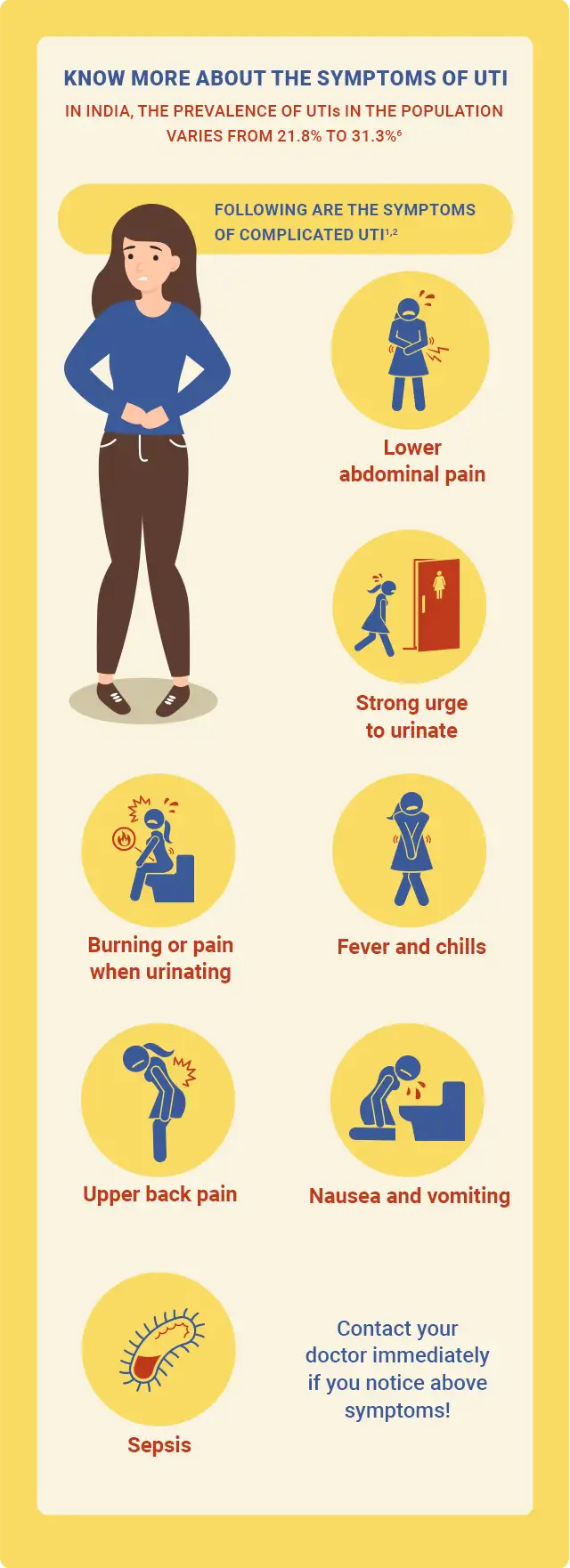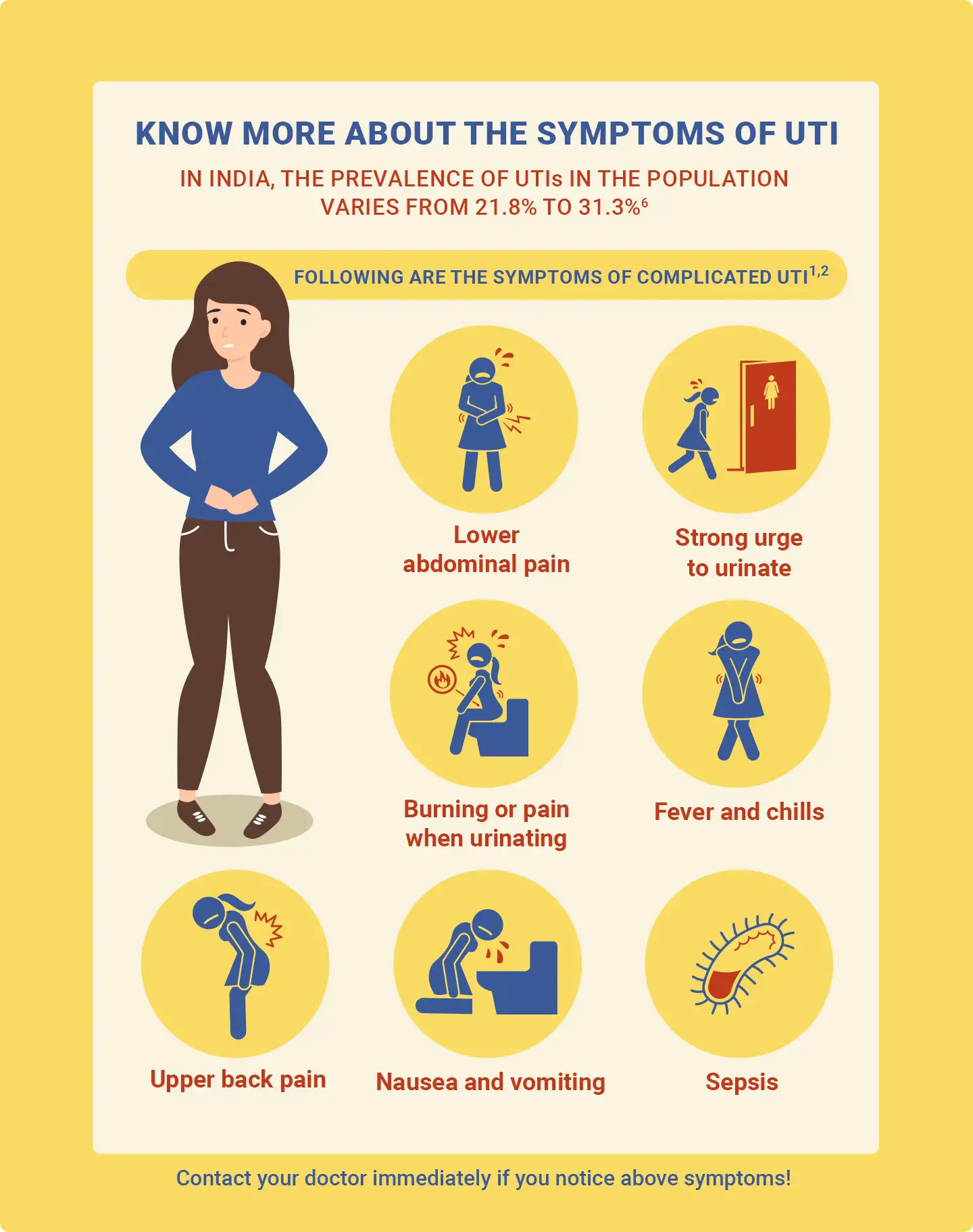Urinary Tract Infection
4 min read
What is a Urinary Tract Infection (UTI)?
A urinary tract infection, or UTI, occurs when bacteria enters your urinary tract- kidneys, bladder, or urethra. About 60% of women and 12% of men will have at least one UTI during their lifetime.1
Complicated UTIs are those that present with greater morbidity, carry a higher risk of treatment failure, and typically require longer antibiotic courses, frequently requiring additional workup. It is any urinary tract infection other than a simple UTI2
Examples of a complicated UTI include:2
- Recurrent infections despite adequate treatment (multi-drug resistant organisms)
- Infections are occurring in pregnancy (including asymptomatic bacteriuria)
- Infections in renal transplant and spinal cord injury patients
- Infections in patients with impaired renal function, dialysis, or anuria
- Infections occurring due to an immune-compromised state, for example, steroid use, post-chemotherapy, diabetes, elderly population, HIV
What is the Urinary Tract?3
The urinary tract makes and stores pee. It includes your:
- Kidneys: The kidneys are a pair of tiny, bean-shaped organs located above the hips on the back of your body. Typically, a person has two kidneys. Your blood is filtered, and the result is urine, which contains water and waste. Urea and creatinine are the common waste products
- Ureters: The narrow tubes that transport urine from your kidneys to your bladder
- Bladder: Before it leaves your body, urine is stored in your bladder, an organ that resembles a balloon
- Urethra: The urethra is a tube that connects your bladder to the exterior of your body for the passage of urine
What are the signs of a urinary tract infection?3
A UTI results in inflammation in the lining of your urinary tract. The inflammation may lead to the following problems:
- Pain in your flank, abdomen, pelvic area or lower back
- Pressure in the lower part of your pelvis
- Cloudy, foul-smelling pee
- Urinary incontinence
- Frequent urination
- Urge incontinence
- Pain when you pee (dysuria)
- Blood in your pee (hematuria)
Other UTI-associated symptoms may include:
- Pain in your penis
- Feeling extremely tired (fatigue)
- Fever
- Chills
- Nausea and vomiting
- Mental changes or confusion
How do you get a urinary tract infection?3
Urinary tract infections are typically brought on by microbes, typically bacteria. The urethra is where they usually enter from, and they could also infect your bladder. Additionally, the infection has the potential to ascend from your bladder to your ureters and ultimately infect your kidneys.
Causes of UTI1
- Body factors: Women undergoing menopause
- Birth control: Women who use diaphragms have also been found to have a higher risk of UTIs
- Abnormal anatomy: If your urinary system is atypical or has recently received a device (such as a catheter tube to drain fluid from the bladder), you are more likely to get a UTI.
- Immune system: Issues such as diabetes (high blood sugar) also put people at higher risk for UTIs
5 tips to help prevent a UTI
Empty your bladder often4
2
Urinate soon after sex4
3

Wipe front to back4
5




